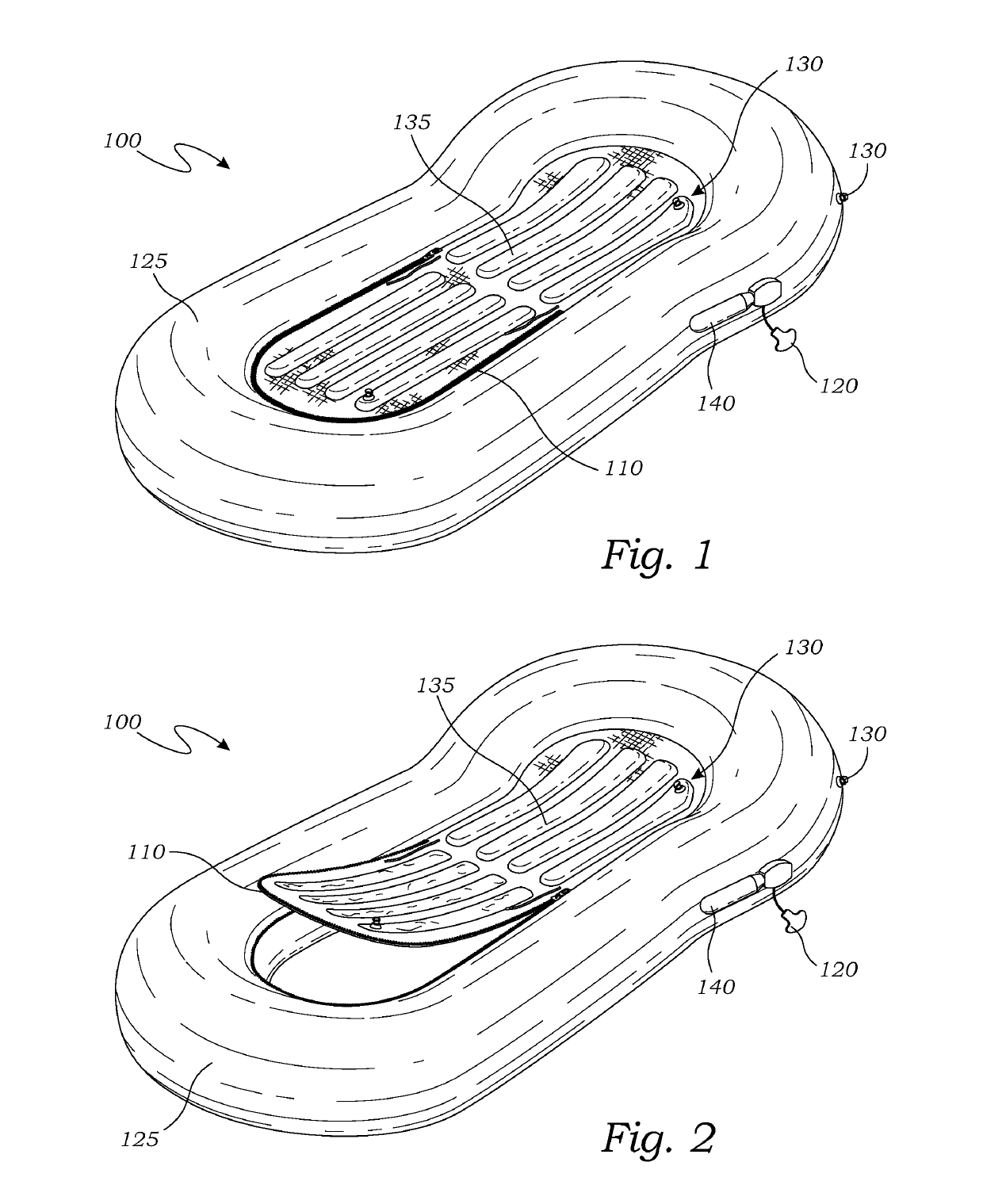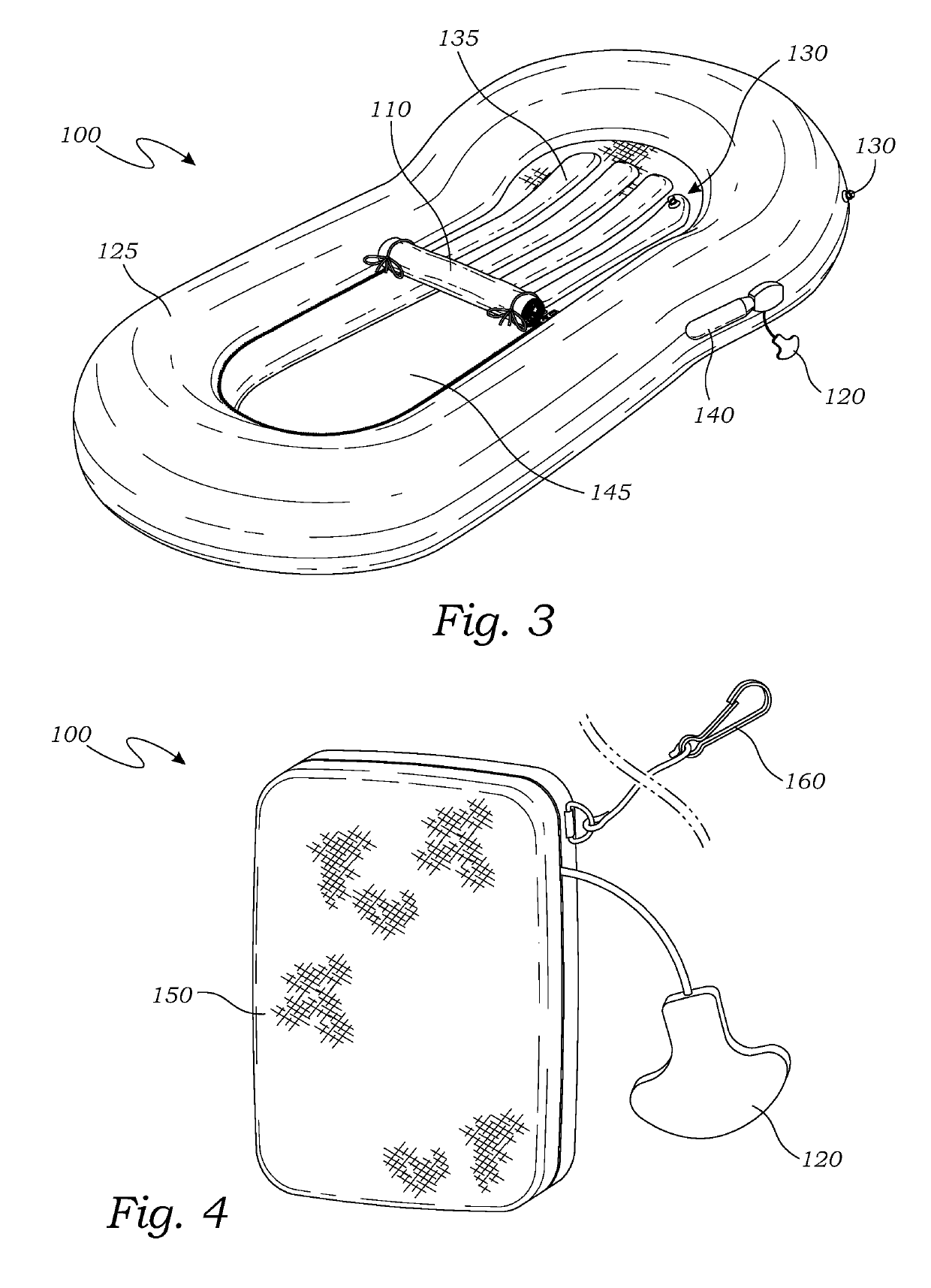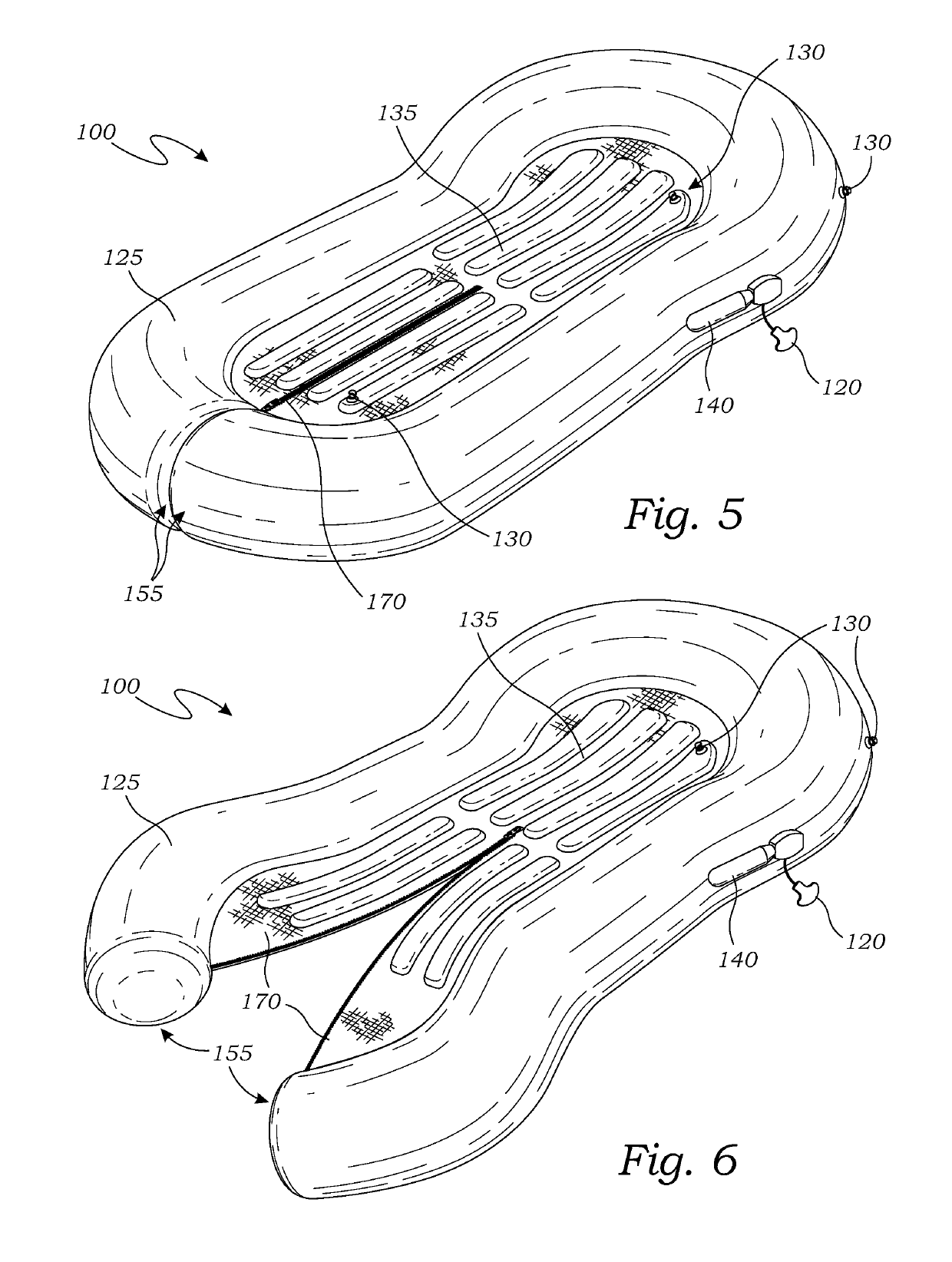Anytime a vehicle, whether it be a ship or an aircraft, travels over a large body of water, there exists a risk that due to an unfortunate occurrence, such as
human error,
adverse weather, or
mechanical failure, passengers and / or
crew may find themselves in the water attempting to survive without the vehicle.
This may occur far from
shore and last for extended periods of time.
Many times, assistance may take several hours or even days to arrive, which may exceed the length of time the individuals in need of rescue are capable of treading water or otherwise physically remaining at the surface under their own power.
This is further compounded by the fact that, in many such situations, passengers and / or
crew may have sustained injuries during the occurrence that separated them from their vehicle, which may significantly reduce their stamina and / or ability to exert physical effort to remain on the surface of the water.
However, there are some significant drawbacks to life vests.
Because
buoyancy is a function of density, such highly buoyant material is typically very voluminous, making wearing such life vests highly awkward and cumbersome.
This, in turn, causes many individuals to forgo wearing a life
vest until an emergency situation arises or is immediately foreseeable.
This behavior reduces the effectiveness of the life
vest because it causes a risk that the individual in need will not be able to locate or properly don the device in time, if an emergency situation materializes rapidly.
While still inconvenient to wear regularly,
inflatable life vests are considerably less awkward and cumbersome to wear, because their buoyancy is derived from an air impermeable bladder that is capable of being inflated when activated, either automatically or manually, but that otherwise remains in a deflated, low-profile position.
There are additional survival challenges associated with water emergencies that life vests cannot effectively address.
Perhaps the most significant challenge is that many of the bodies of water that vehicles regularly cross are of a temperature such that individuals in direct contact with the water would not survive for very long, even if they could manage to keep their heads above water indefinitely.
Therefore, prolonged submersion in even mildly cold water can be lethal within a deceptively short period of time.
This means that if a water related emergency situation arose in those regions, a life
vest alone would have little or no ability to increase
survivability.
While a float coat may provide more
thermal insulation than the typical life vest, most float coats are primarily designed to thermally insulate an individual from thermal loss caused by air, and therefore, are not designed to be particularly proficient at insulating individuals when submerged in water.
By contrast, survival suits are designed to thermally insulate an individual in water and are very effective at achieving this goal; however, survival suits are also very expensive, bulky, require considerable time get into, and because of their waterproof nature, typically do not breathe adequately to be worn comfortably, making them an unsatisfactory option for prophylactic, low-risk use.
Life rafts do, however, have their limitations as well.
The biggest limitation is their typical size.
Most life rafts are too large and bulky to be physically attached to or worn by an individual; therefore, while most vehicles that travel across large bodies of water carry a life raft, in order to realize the safety benefits of a life raft, an individual on an ill-fated vehicle must have the opportunity to locate where the life raft is stored, remove the life raft, and deploy the life raft.
Depending on the circumstances of the water emergency, this opportunity may not always be available.
These life rafts are quite heavy, weighing 50-100 lbs and are quite bulky, which makes them difficult to remove from their stored position and similarly difficult to deploy.
In a man overboard situation, a rapidly sinking vessel, or the downing of an aircraft over water, there often isn't enough time for victims to wrestle a large, heavy,
inflatable life raft out of its stored position and deploy it.
This difficulty may leave individuals in direct contact with the water for an extended period of time and prone to
hypothermia and / or death.
Most smaller boats and skiffs do not carry life rafts because they are too bulky and too heavy to have onboard.
Moreover, one study recorded 28% of fatalities from commercial
fishing vessel loss in California, Oregon and Washington between 2000 and 2006 had no raft aboard.
Their weight and bulkiness make the wearer less agile, particularly when climbing through the small door of a sinking plane or while having to maneuver
underwater.
Fear of not being able to egress the vehicle in a water emergency or simply preferring to not endure the inconvenience of the
safety equipment during normal, low risk operation of the vehicle causes many pilots,
aircrew and mariners to forego use of these life rafts.
Other issues with these one man life rafts include their high cost and the difficulty of boarding them once deployed.
Climbing over the edge of a legacy life raft can be difficult, especially for those who may have been injured in the incident that caused the water emergency.
If an individual deploys a legacy life raft and cannot
climb in, they may perish from
hypothermia as if they did not have a life raft.
These adverse factors (bulk, weight, cost and boarding difficulty) make legacy life rafts a less than
ideal solution for many people including air crewmen,
deck personnel on ships of all sizes, sailors, commercial and recreational fishermen and other mariners whose lives could potentially be saved if there existed a lightweight personal
water safety device that provided both buoyancy, ease of ingress, and
thermal protection.
 Login to View More
Login to View More  Login to View More
Login to View More 


